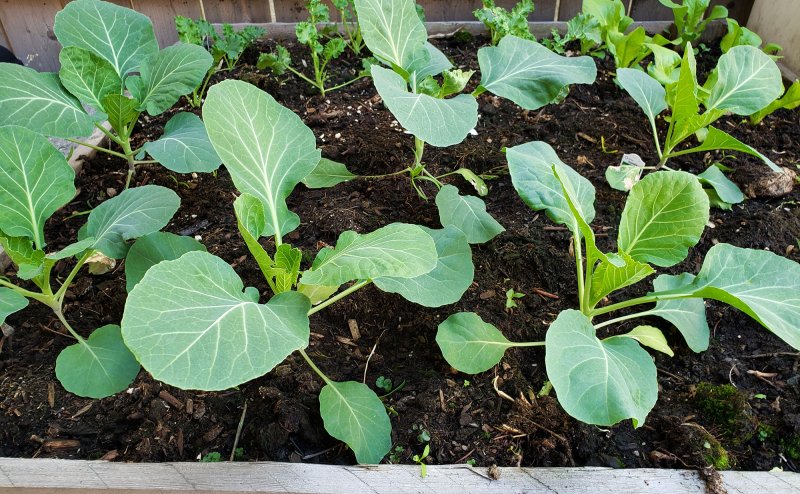
Veg Instead! is a City of Edmonton project to encourage and help Edmontonians to grow vegetables, for personal consumption and/or sharing, in non-traditional areas of their private property, such as front and side yards and balconies.
Where Can I Plant?
You can grow food on private property, including front lawns and balconies, without a permit (if you belong to a homeowners or condominium association, be sure to verify they allow you to do so). Non-traditional locations, such as front yards and side yards, should be included in your location selection process.
If you plan to disturb the ground, visit Utility Safety Partners to learn how to do so safely.
Front Yard Gardens
If you live in a house with a front yard that receives lots of sun, there should be ample space to grow veggies. There are 2 options for growing veggies in your yard: directly in the ground or in raised garden beds.
- Edge out the area where you would like to plant, remove as much grass as possible, turn the soil and rake to loosen
- Apply a 1-inch layer of compost to build the organic matter content of the soil
Once you have planted your garden, you can apply mulch to keep undesirable plant growth to a minimum and to help maintain moisture levels.
- Start by ensuring your location is level.
- Apply scrap cardboard or layers of newspaper before placing or building the frame on the ground.
- This layer prevents grass from growing up through your garden.
- Fill your raised bed with good quality soil and top with compost, if needed.
- This option requires less digging, but requires some additional tools and materials. This is also a good option if soil contamination, (for example, from ice-melting compounds) is a concern.
Balcony Gardens and Other Creative Spaces
If you don’t have yard space, get creative and follow these tips to select the ideal home for your plants:
Containers come in all shapes and sizes and ideally can be sourced from materials you already have lying around.
- Smaller containers (anything less than approximately 2 litres) should be used for herbs and salad greens. Plan to water smaller containers more often.
- Larger containers can be used for more productive and calorie-dense foods like potatoes, onions, carrots and beets.
Avoid material that has been in contact with harmful chemicals.
Bags, especially reusable grocery bags, are an excellent and inexpensive way to plant vegetables on patios and balconies. These bags are easy to move and fit in awkward spaces and easy to store at the end of the growing season.
If you are handy and have access to a few tools (hammer, saw, screws and drill), old wood pallets can be disassembled and reassembled to make custom garden boxes to fit your location(s).
Old wood pallets and vertical shoe racks can make ideal vertical garden options.
Vertical gardens can be ideal because they take up less space, beautify your living space and produce appealing fragrances, particularly when growing herbs.
You can also re-purpose old food containers such as coffee tins, salad green containers, salsa jars or peanut butter jars to grow plants.
Pop bottles can also be used to create a vertical garden. A bottle hanging garden can have each bottle fit into the one below by cutting a hole. Excess water will flow out the bottom bottle into a bucket or other type of water collection receptacle.
Location Scouting Tips
- Select locations that have adequate access to 6-10 hours of sunlight every day
- Make sure the soil has good drainage and isn't very compacted, like clay
- Ensure the location is easily accessible for you to maintain with water, nutrients and pest control
- Avoid areas where ice melters, vehicle fumes or other topical applications may affect the quality of the produce grown
Environmental Benefits
The Change Habits for Climate Guide discusses how the food we eat is a major source of the carbon emissions we create.
It takes a lot of energy and emissions to get a foreign product to our kitchens in Edmonton. Many Edmontonians recognize that food and urban agriculture are an important opportunity to reduce emissions and to increase sustainability and quality of life in their communities.
At the turn of the 20th century, almost all the food consumed in the Edmonton region was grown here. Having a large garden was commonplace. The environmental benefits of gardening include increased biodiversity and animal habitat, less use of pesticides and fertilizers than in commercial agriculture and fewer food miles because the food has not been shipped.
In August 2019, City Council declared a State of Climate Emergency in Edmonton. This climate emergency declaration reaffirmed the City’s commitment, laid out in Edmonton’s strategic plan, ConnectEdmonton, to being a climate resilient city.
Veg Instead! supports this commitment by demonstrating that urban agriculture plays a role in increasing Edmonton’s climate resilience.
About the Initiative
Veg Instead! has roots in several strategic directions from fresh: Edmonton’s Food and Urban Agriculture Strategy, which imagines how new approaches to food and urban agriculture can make Edmonton an even better place to live, work, play and invest.
Veg Instead! also stems from the Climate Resilient Edmonton: Adaptation Strategy and Action Plan and Edmonton's Energy Transition Strategy, as growing food is more environmentally friendly than growing grass and helps make our city more climate resilient.


